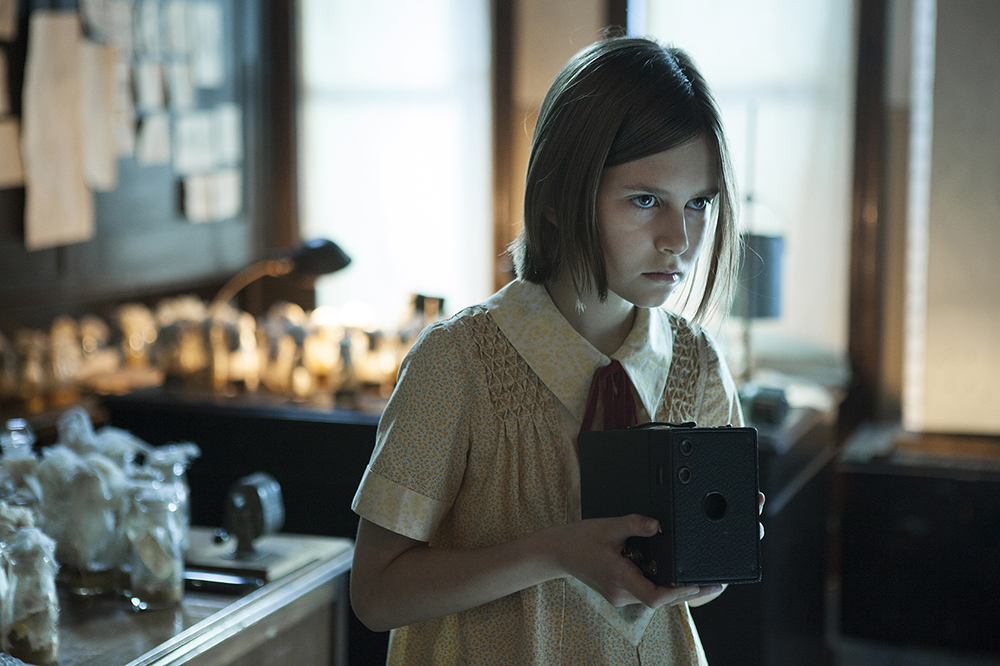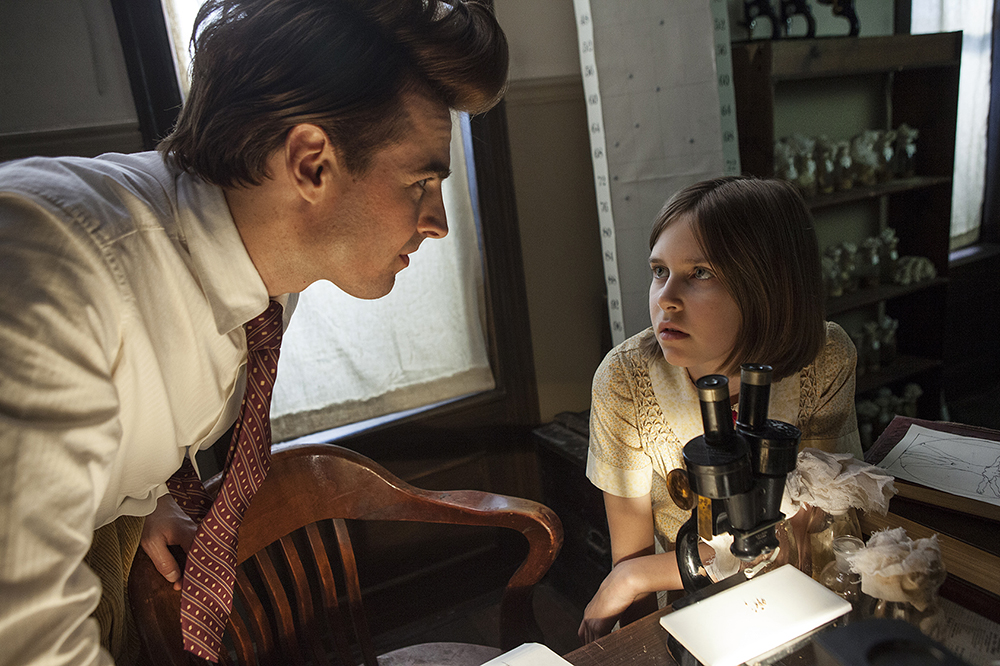The Fly Room is a sweeping, yet intimate portrait of the complicated relationship between Calvin Bridges, father of modern genetics, and his wide-eyed, ten-year-old daughter Betsey. The story helps bring to life one of the most important scientific laboratories of the 20th Century, taking place predominantly in one location: the original Fly Room laboratory at Columbia University.
The story is portrayed from Betsey’s perspective at the ages of ten and twenty-one, with a coda featuring the real Betsey at ninety-five. The younger Betsey personifies the curiosity that science brings out in all of us and she allows us to move freely back and forth between the pragmatic scientific space and a magical realm where flies and humans mingle. Uninhibited by her struggle to understand the oddities that inhabit the unfamiliar scientific laboratory, Betsey asks questions that clarify difficult scientific concepts. At the forefront of the film is a dramatic narrative about a girl’s quest to understand her father through his research, but the story at the same time emphasizes the importance of model organisms, such as the fly, in understanding universal laws of science and how that speaks to our identity and who we are.
By revisiting her memories at the time of her father’s death, the twenty-year old Betsey acknowledges the impact that her father’s work in genetics had and the irony of his inability to understand his genetic role within the family. Betsey is ultimately able to resolve the confusion about her relationship with her father and, by escaping painful memories from their time together, grant herself the freedom to evolve beyond her tormented childhood and pursue a life of her own with her fiancé Ed. For her 95th birthday, Betsey surrounds herself with her children, grandchildren and great-grandchildren, demonstrating the true emotional depth and power that genetics can hold.


